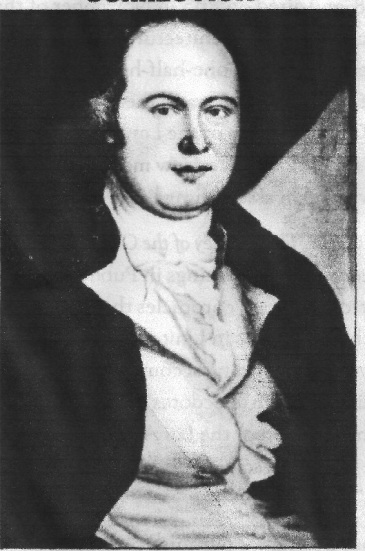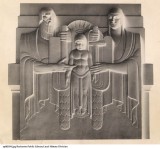In 1800, three men came to western New York to review sites for the settlement that would become Rochester. The three included: Nathaniel Rochester (who would give his name to the new community); William Fitzhugh (for whom Rochester named one of the original thoroughfares, Fitzhugh Street); and Charles Carroll of Belle Vue (as he signed himself, November 7, 1767-October 28, 1823), for whom another of the original roads was named, Carroll Street. Today Carroll Street and Charles Carroll are gone and almost forgotten.
This is the story of why Carroll was written out of our history (and the later attempt to rectify the omission).

Charles Carroll of Belle Vue (1767-1823)
Upstate Magazine, Democrat and Chronicle, December 27, 1981, p. 14
Charles Carroll of Belle Vue came from a large, prosperous, and respectable family. Many members of the family were named “Charles,” which necessitated the use of modifiers to identify each. The American ancestor of the clan was Charles Carroll, “The Settler” (1660?-1 July 1720), who was Attorney General of the colony of Maryland. The Settler’s grandson, Charles Carroll of Carrollton, “The Signer” (September 19, 1737-November 14, 1832), was one of the signers of the Declaration of Independence, and later a U.S. Senator. Among other members of the extended clan were Daniel Carroll (July 22, 1730-May 7, 1796), a signer of the Articles of Confederation and the Constitution of the United States. Daniel’s brother, John Carroll (January 8, 1735-December 3, 1815), was the first American Catholic bishop and later Archbishop of Baltimore.
Our Charles was born in Frederick County, Maryland. In 1789, he moved westward to Washington County, Maryland, where he built a large estate named Belle Vue near Hagerstown, Maryland. The 1803-1804 tax roll testifies to his wealth. The document affirms that he had 27 horses, 100 head of cattle, and 28 slaves. By the time he moved permanently to the Genesee Country in 1815, he reportedly had at least 40 slaves.
It was in Hagerstown that he made the acquaintance of both Nathaniel Rochester and William Fitzhugh. In 1807, he was elected a director of the Hagerstown Bank. Fitzhugh was another director, while Rochester was the founder of the firm and served as President. The three became close friends and shared an interest in land speculation, which led them to travel to various portions of the country seeking properties to acquire and develop.
When Nathaniel Rochester relocated to New York, he settled first in Dansville and then to the village named after him. Carroll moved to New York in 1815, settling in Groveland (Livingston County, near Geneseo). Despite the distance between them, Carroll and Rochester were in constant contact. As noted, the respect Rochester had for his partners can be seen by the fact that he named two of the original streets for them.

Carroll Street and Fitzhugh Street can be seen in this 1827 map. NB: Buffalo Street is now West Main Street. (Elisha Johnson, directory map of the village of Rochester, 1827)
Today Carroll Street no longer exists. Why is that?
Nathaniel Rochester died on May 17, 1831. Four months later, on September 13, 1831, the Common Council voted to rename Carroll Street “State Street.” This was a result of a lawsuit the village had lost. The community had wanted a site for a public market and sought to obtain property owned by Charles Holker Carroll (Belle Vue’s son) for the purpose. A dispute arose over Holker’s continued use of the property he had sold to the town. When the matter couldn’t be resolved, Holker took the town to court. He won the case, and the Common Council, in a fit of pique, changed the name of the street, writing Holker’s father out of Rochester’s history.
One hundred and forty years later, the City Council of Rochester sought to rectify the omission. On July 10, 1973 the City Council passed another resolution that “the park facility known as Genesee Crossroads Park West be renamed ‘Charles Carroll Park’ in honor of Major Charles Carroll, one of the co-founders of the City of Rochester.”

Charles Carroll Park (1987)
-Christopher Brennan
